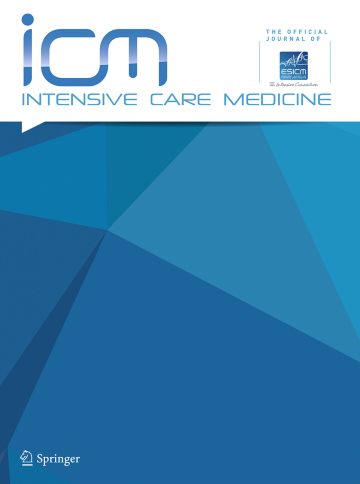急性脑损伤的最新进展
IF 21.2
1区 医学
Q1 CRITICAL CARE MEDICINE
引用次数: 0
摘要
尽管最近在理解和管理急性脑损伤(ABI)方面取得了进展,但它仍然是全球死亡和残疾的主要原因。由于目前没有干预措施可以逆转原发性损伤,重症监护病房(ICU)的ABI管理主要集中在尽量减少继发性脑损伤[1]。考虑到ABI中涉及的异质性病理生理,根据疾病的内型和表型向个性化护理的转变是必要的,以改善结果。在这份手稿中,我们总结了ICU中ABI管理的最新证据的关键方面。本文章由计算机程序翻译,如有差异,请以英文原文为准。
Update on acute brain injury
Despite recent advances in understanding and managing acute brain injury (ABI), it remains a major contributor to mortality and disability worldwide. As there are currently no interventions available to reverse the primary injury, ABI management in the intensive care unit (ICU) is mainly focused on minimising secondary brain damage [1]. Given the heterogeneous pathophysiologies involved in ABI, a shift towards individualised care based on disease endotype and phenotype is warranted to improve outcomes. In this manuscript, we summarise key aspects of the latest evidence on ABI management in the ICU.
求助全文
通过发布文献求助,成功后即可免费获取论文全文。
去求助
来源期刊

Intensive Care Medicine
医学-危重病医学
CiteScore
51.50
自引率
2.80%
发文量
326
审稿时长
1 months
期刊介绍:
Intensive Care Medicine is the premier publication platform fostering the communication and exchange of cutting-edge research and ideas within the field of intensive care medicine on a comprehensive scale. Catering to professionals involved in intensive medical care, including intensivists, medical specialists, nurses, and other healthcare professionals, ICM stands as the official journal of The European Society of Intensive Care Medicine. ICM is dedicated to advancing the understanding and practice of intensive care medicine among professionals in Europe and beyond. The journal provides a robust platform for disseminating current research findings and innovative ideas in intensive care medicine. Content published in Intensive Care Medicine encompasses a wide range, including review articles, original research papers, letters, reviews, debates, and more.
 求助内容:
求助内容: 应助结果提醒方式:
应助结果提醒方式:


